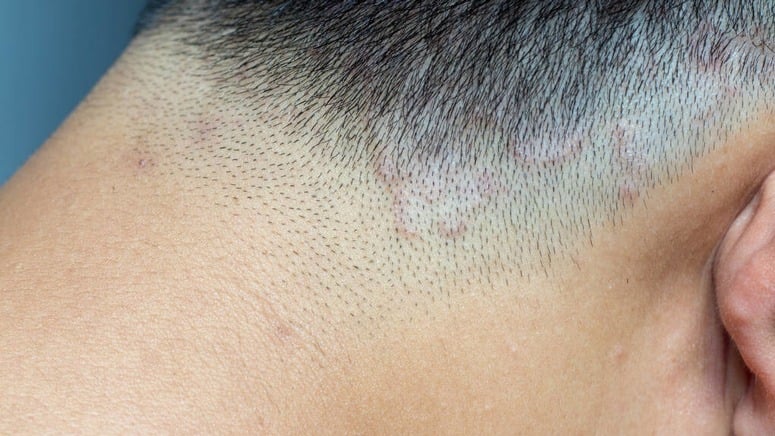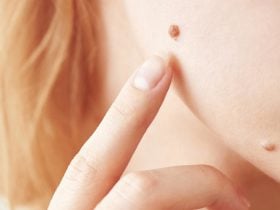Ringworm is common fungal infection that affects the skin. It is caused by moldlike fungi that live on dead skin tissues. It can affect any part of the body but is often seen on the scalp and legs. In most parts of the skin, it is observable as ring-shaped patches. An infection on the palms, groin, chin, foot, or nails can look very different from a ring-shaped patch.
According to the Center for Disease Control and Prevention [2], ringworm symptoms may appear as early as four days after infection, or they may take as long 14 to show. Ringworm symptoms can vary with the infected body part. General symptoms of ringworm include: itchy skin, ring-shaped patches with raised or bumpy borders, hair loss, rash, and red, scaly skin. The rash caused by ringworm doesn’t look the same on everyone. Depending on your skin color, it may look red, silver, or simply have a darker hue than the surrounding skin.If you only know what it is like on your scalp or the skin of your ankle, you may have a hard time recognizing the infection in your nails or groin. Below are some ringworm symptoms by location.
Scalp (Tinea Capitis)

Infection on the scalp is more common in children than in adults. It is noticeable as a circular, crusty and itchy red patch on the head. Hair loss accompanies this infection, so the infected patch is almost always bald. Many people shave off all their hair when the patches become too prominent. The hair will grow back when the infection is gone. The bald patch usually has small black spots within it. The skin around is soft, squishy and inflamed. According to the American Academy of Dermatology Association [3], pus-producing sores may develop at the ringworm site. It is also possible that the lymph nodes become inflamed due to this infection.













